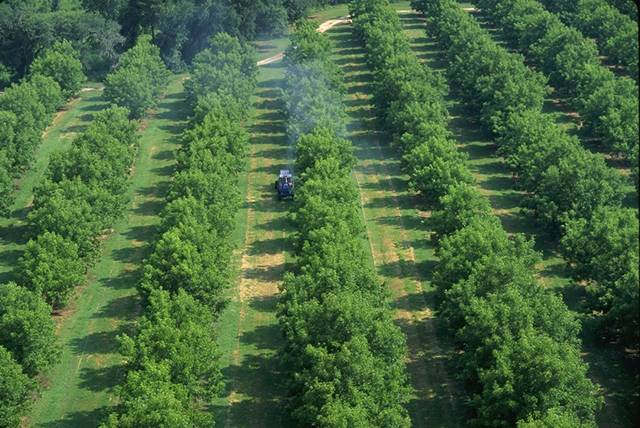By Clint Thompson
Pecan trees planted in March are at disadvantage when compared to those planted in January and February. Growers should abstain from trying to plant new trees during this time of year, believes Lenny Wells, University of Georgia (UGA) Cooperative Extension pecan specialist.

UGA research shows that trees trying to get established in early spring will struggle compared to those in the latter winter months.
“We’re in the middle of a study looking at planting date and how late into the planting season you go and see how that affects the growth and survival of the tree. What we’ve noticed is, normally as you get into March, the trees tend to don’t grow as well,” Wells said. “Your survival may be a little less. That all relates back to the transplant shock on that tree. If you’re planting it that close to when everything has to start going and the buds break and the tree wakes up and gets going and it doesn’t have its roots established yet, that puts additional stress on that tree.
“It’s already under some transplant shock. That stress attracts ambrosia beetles which are a whole other thing on their own. If you plant in January and early February, you tend to have a lot less problems.”
Producers can identify ambrosia beetle activity by the toothpick-sized sawdust tubes the beetles leave sticking out of holes bored in pecan trees.
The problem is exacerbated if trees experience early budbreak, which is the case this year.
“This year kind of snuck up on everybody. I would have expected to be able to transplant through the first week of March with no real issue but as close as budbreak is, it created some additional stress,” Wells said.









